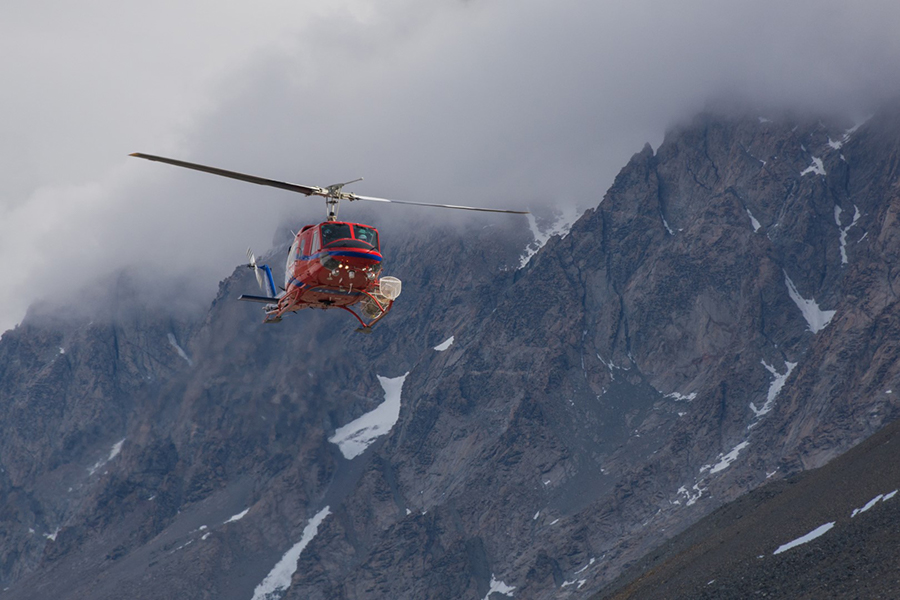
Photo Credit: Mike Lucibella
|
A Bell 212 Helicopter comes in for a landing at the Lake Hoare field camp.
|
Podcast: Helo Ops
By Michael Lucibella, Antarctic Sun Editor
Posted December 8, 2017
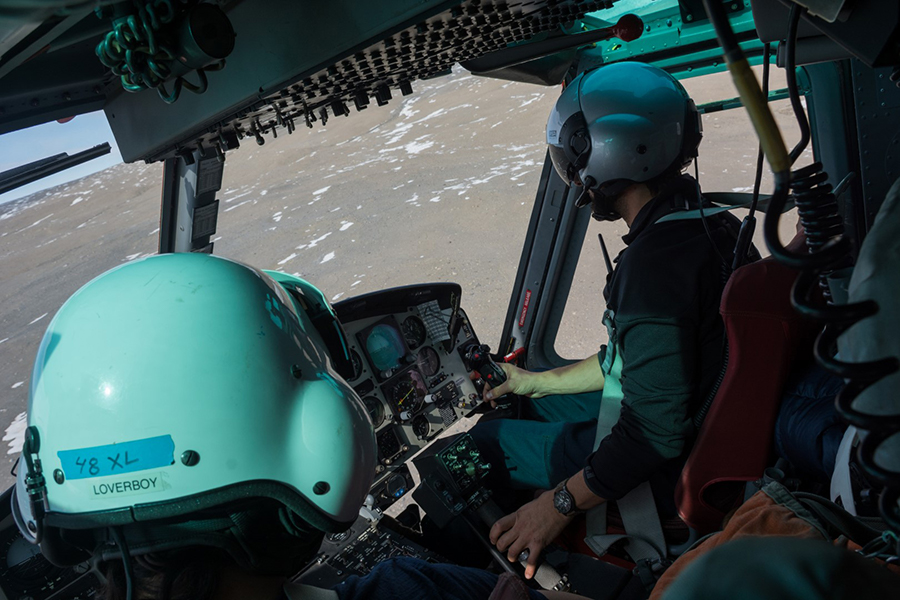
Photo Credit: Mike Lucibella
Mike Tinervia (right) pilots a Bell 212 helicopter over the McMurdo Dry Valleys with Mike Jansen.
In Antarctica, scientists conduct cutting edge research on a harsh and barren continent. It’s no easy task, but to
help make it happen the U.S. Antarctic Program employs small army of support staff to get these researchers the
supplies they need, transport them to where they need to go and keep them safe throughout.
A lot of the jobs they do are the same that any small town needs to function, often with a specialized twist that
comes with working in such a remote place, but others can be less obvious. The Antarctic Sun Podcast is taking a
behind-the-scenes look at the workers and what they do to make science at the bottom of the world possible.
This week: Helo Ops
Without any network of paved roads, getting around Antarctica’s rugged landscape is tough. Helicopters are the primary
means to transport people and equipment to the near field, the sites outside of McMurdo Station that are too far or are
otherwise inaccessible by vehicles. Every day dozens of helicopters, or “helos” as they’re usually called, fly around
Ross Island, the McMurdo Dry Valleys and the nearby transantarctic mountains.
It takes a lot of coordination to safely operate a small fleet of helicopters around the continent. With numerous of
science groups and support teams needing them on a daily basis, they’re being used almost all the time. Making sure
that everyone gets to where they need to go takes a lot of planning.
Especially when a day’s carefully planned schedule can go completely out the window as the wind shifts.
The weather around the continent is notorious for changing without warning. Still blue skies can turn into a blustery
windstorm in the blink of an eye and just like that all the day’s flights are grounded until the weather improves. If
conditions aren’t ideal, no one flies. It’s one of the challenges of working in Antarctica, but keeping everyone safe
is the top priority of everyone on the helicopter operations crew.
Photo Gallery
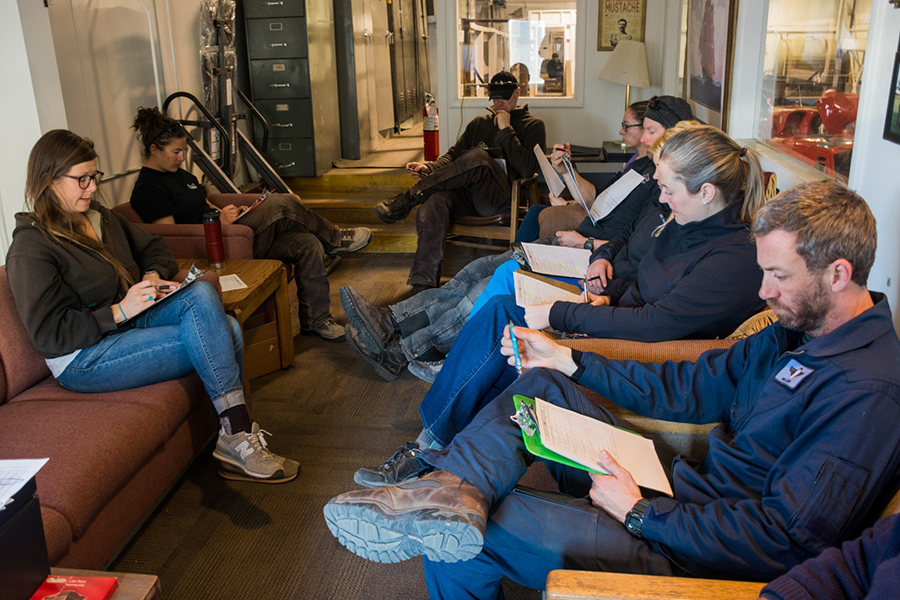
Photo Credit: Mike Lucibella
Every day, before any flights get off the ground, the helicopter operations team meets to plan where they're flying and who’s going where.
|
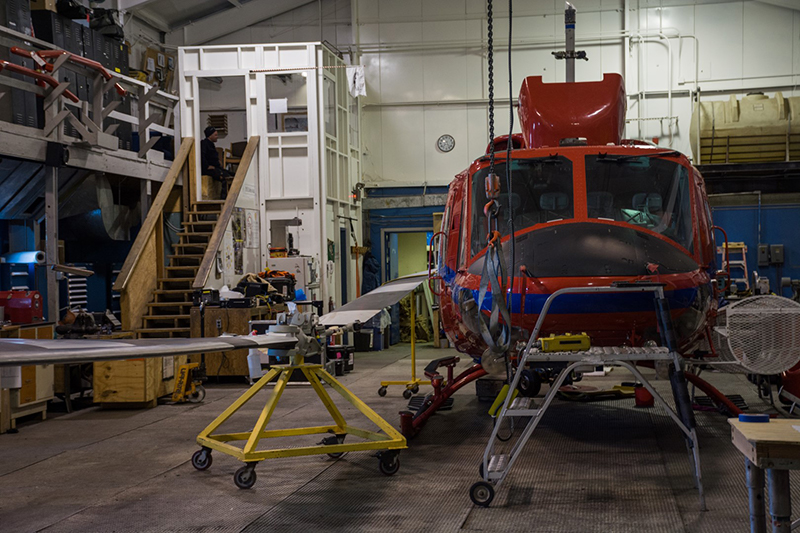
Photo Credit: Mike Lucibella
A Bell 212 helicopter undergoes maintenance in McMurdo Station's helicopter hangar. Because replacement pieces can be hard to get, the hangar is fully stocked with parts and tools to fix almost any potential mechanical issue.
|

Photo Credit: Mike Lucibella
Pilot Mike Jansen does the preflight checks on a Bell 212 before taking off.
|

Photo Credit: Mike Lucibella
Helicopter techs Rebecca Voltin (left) and Jen Benedict get cargo and luggage prepped before a flight.
|

Photo Credit: Mike Lucibella
An A-Star 350 sits on the ground at Cape Royds.
|
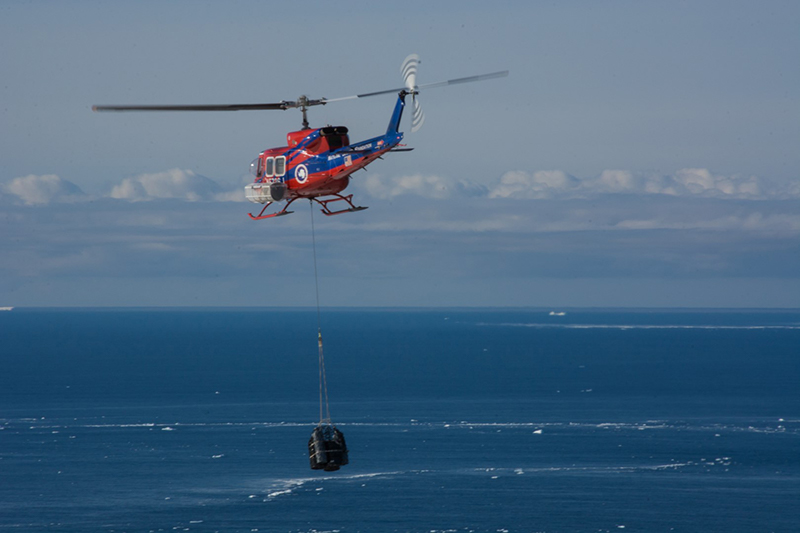
Photo Credit: Mike Lucibella
A Bell 212 carries drums of liquid away from Cape Crozier. Big loads like this one are slung under the helicopter.
|
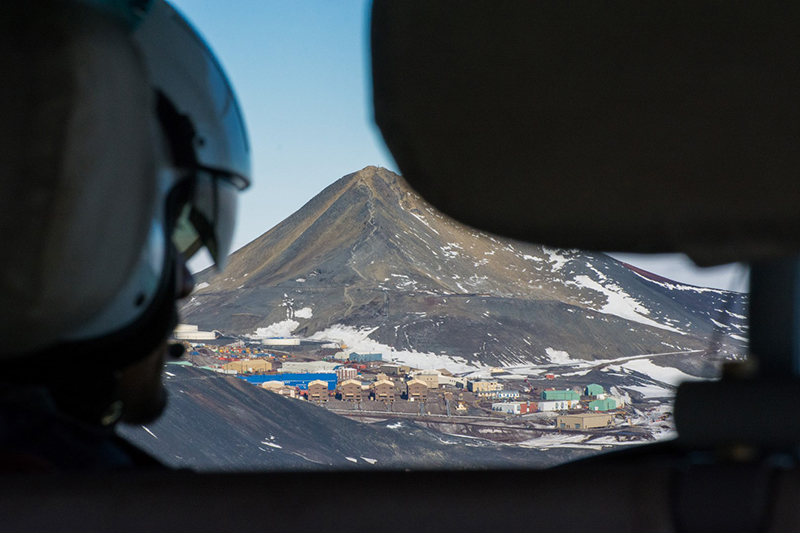
Photo Credit: Mike Lucibella
At the end of a long day, McMurdo Station appears up ahead as the helicopter crew returns home.
|













